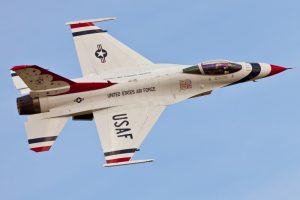Stepping into the world of Air Force enlisted ranks, you’re diving deep into a system that’s all about precision and progression. It’s where raw recruits transform into the leaders who help keep our skies safe. From airman basic to chief master sergeant, each rank is a new chapter in an Air Force story—a journey marked by skill development, increased responsibility, and service dedication.
This look at Air Force enlisted ranks will give you the lowdown on climbing this structured ladder. You’ll get insights on how insignia marks achievement milestones and how pay grades reflect years of commitment.
Come along as we map out the tiers from foundational airmen roles through seasoned noncommissioned officers—unpacking their titles and vital contributions to mission success.

Table of Contents:
- Understanding Air Force Enlisted Ranks and Structure
- The Path to Advancement in Air Force Enlisted Ranks
- Rank Insignia and Pay Grades Across Air Force Enlisted Ranks
- Roles and Responsibilities at Each Level of Air Force Enlisted Ranks
- Conclusion
Understanding Air Force Enlisted Ranks and Structure
Airmen Tier – The Foundation of Enlisted Ranks
The United States Air Force journey starts at the Airmen tier, where young recruits get their wings. Here, you’ll find fresh faces like the airman basic (E-1), a title earned right out of basic training. As these service members move up, they hit ranks like airman (E-2) and airman first class (E-3). They learn more than just marching; it’s about molding into vital cogs within the massive machine of the Air Force enlisted ranks. Climbing to senior airman (E-4), one begins to taste leadership responsibilities — albeit with close supervision.
Noncommissioned Officers – The Backbone of Leadership
Buckle up because once an enlisted member hits staff sergeant (E-5), they’re stepping into NCO territory. This isn’t for show; as noncommissioned officers, staff sergeants are thrust into direct leadership roles. They shoulder real responsibility for others’ actions and welfare—think mother hens but with stripes instead of feathers. Technical sergeants (E-6) follow suit, diving deeper into this backbone role by taking on even more complex tasks critical for mission effectiveness.
Senior Noncommissioned Officers – Leading the Enlisted Force
You’ve heard “cream rises to the top,” right? In Air Force terms, we’re now talking about senior noncommissioned officers or SNCOs. These include master sergeants (starting at E-7) who have climbed through tiers not just by time served but also thanks to their smarts — each promotion reflects increased education level and expertise within specific force specialties. Then there are those reaching higher skies: senior master sergeant (E-8) and chief master sergeant (E-9) — the highest enlisted rank achievable before hitting command chief status — and let me tell you, it’s no small feat getting there. Looking across all military services, a pay grade bump comes with each rise, effectively sweetening every step forward. Achieving NCO status requires both prowess and patience — average times ranging from 16 months for some promotions to over two decades when eyeing that prized chief master sergeant spot. And hey, did I mention programs like Below-the-Zone can boost high fliers past typical timelines?
The Path to Advancement in Air Force Enlisted Ranks
As you lace up your boots and salute the flag, remember that each stripe on an airman’s sleeve tells a story of dedication, skill, and time served. In the U.S. Air Force, climbing through enlisted ranks is no overnight affair—it’s more like scaling a mountain with promotions as checkpoints along the way.
From Basic Training to Leadership Positions
Moving up from Airman Basic (E-1) typically takes about 16 months before reaching Airman First Class (E-3), but it doesn’t stop there. The goal for many is to reach Noncommissioned Officer (NCO) status as Staff Sergeant (E-5). Some aim even higher—for the seasoned expertise of Chief Master Sergeant or possibly entering into elite territory as Command Chief Master Sergeant.
Beyond just time-in-service and test scores, those looking for an edge can pursue programs like Below-the-Zone—think of it as hitting the fast-forward button on your career if you’ve got what it takes to stand out from your peers early on. This program lets some high-flyers pin on their new stripes sooner than average times suggest.
Average promotion times tell us that reaching Staff Sergeant may take over four years, while setting sights on Senior Noncommissioned Officer ranks such as Senior Master Sergeant might require two decades or more in service—and rightly so because these roles are pivotal; they mold young airmen into warriors ready for any mission thrown their way.
Your journey through the force’s enlisted rank structure isn’t just about gaining bars and stars; it’s also about acquiring the wisdom to lead effectively. After all, leadership in our armed forces isn’t handed out lightly—it’s earned one step at a time by those willing to go above and beyond to defend our nation.
Rank Insignia and Pay Grades Across Air Force Enlisted Ranks
Every airman’s uniform in the Air Force sports unique rank insignia, a visual shout-out to their level within this elite group. It’s more than just badges and stripes; it represents a path of dedication, skills honed over countless hours, and responsibilities that can weigh as much as an aircraft. These symbols serve not only as military services standardization but also align with specific pay grades – think of them like rungs on the career ladder where each step up means a little more weight in your wallet.
Recognizing Rank Through Insignia
The enlisted force begins with the fresh-faced airman basic (E-1), easily spotted by their lack of logo – they’re brand new to this world, after all. Climb up to E-4, senior airman, sporting three chevrons. Then there’s the staff sergeant (E-5), who carries extra responsibility along with that fourth stripe. Moving onto technical sergeant (E-6) and master sergeants (starting at E-7), these ranks mark seasoned members whose advice is gold dust for those rising.
Topping out at chief master sergeant (E-9), including roles like command chief master sergeant or even the one-and-only Chief Master Sergeant of the Air Force, are positions held by true guardians of force tradition; think Yoda if he was into aviation instead of lightsabers.
All jokes aside, understanding how pay grades tie into rank can help you navigate your journey through military rankings. The difference between commissioned officer statuses such as lieutenant colonel or major general compared to noncommissioned officers is significant both in terms of role expectations and paycheck digits.
Roles and Responsibilities at Each Level of Air Force Enlisted Ranks
The enlisted ranks in the Air Force are much more than stripes on a uniform; they’re markers of responsibility, leadership, and expertise. From an Airman Basic to the esteemed Chief Master Sergeant, each rank carries unique duties that keep the wheels of the military machine turning smoothly.
Airmen Tier – The Foundation of Enlisted Ranks
Budding careers start with entry-level airmen who lay down their service’s groundwork. These fresh faces after basic training range from E-1 to E-4 pay grades—where one begins as an Airman Basic before climbing up to Senior Airman. Their tasks focus on learning the ropes: mastering technical skills for specific force specialties while supporting mission effectiveness through sheer grit and determination.
Noncommissioned Officers – The Backbone of Leadership
Moving up, we hit NCO status—a true game-changer. Here lies our Staff Sergeants (E-5) and Technical Sergeants (E-6), whose roles pivot towards leadership school principles like mentorship and strategy implementation in their Air Force specialty areas. They guide junior members while maintaining readiness for whatever comes next.
Senior Noncommissioned Officers – Leading the Enlisted Force
The SNCO tier is where experience shines brightest among enlisted members—from Master Sergeant to Command Chief Master Sergeant—the highest enlisted paygrade e-, reserved for those embodying wisdom akin to commissioned officers such as Lieutenant Colonel or even Major General but without commission itself. Not only do these senior master sergeants act as key advisors on all matters enlisted, but they also fine-tune war-fighting capabilities by fostering unmatched levels of discipline within troops under them.
The full spectrum of these ranks contributes profoundly not just operationally but culturally also within branches like the Space Force or Marine Corps—shaping service members into leaders prepared across any theater command may face.
Air Force Enlisted Ranks Conclusion
So, you’ve journeyed through the structure of Air Force enlisted ranks. You’ve seen how airmen basics lay the groundwork and how senior noncommissioned officers lead with experience.
Remember this: rank matters. It charts growth from fresh recruits to strategic leaders. Remember this, too: insignias are milestones; they signal progress and responsibility gained over time.
Hold onto this thought: promotion is no sprint; it’s more marathon than a dash, demanding patience and perseverance at every turn.
Cling to these facts as well: Pay grades do more than define salary; they symbolize dedication honored across all service branches. Hold fast to these insights because understanding them is critical in appreciating our military’s backbone—the enlisted men and women who make mission success possible day after day.
Want more military info? Find your nearest military recruiter here!
